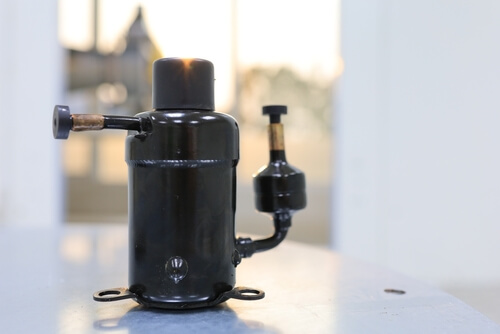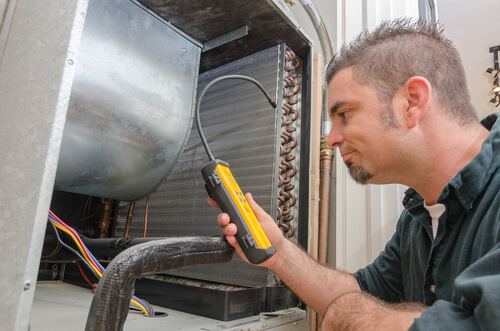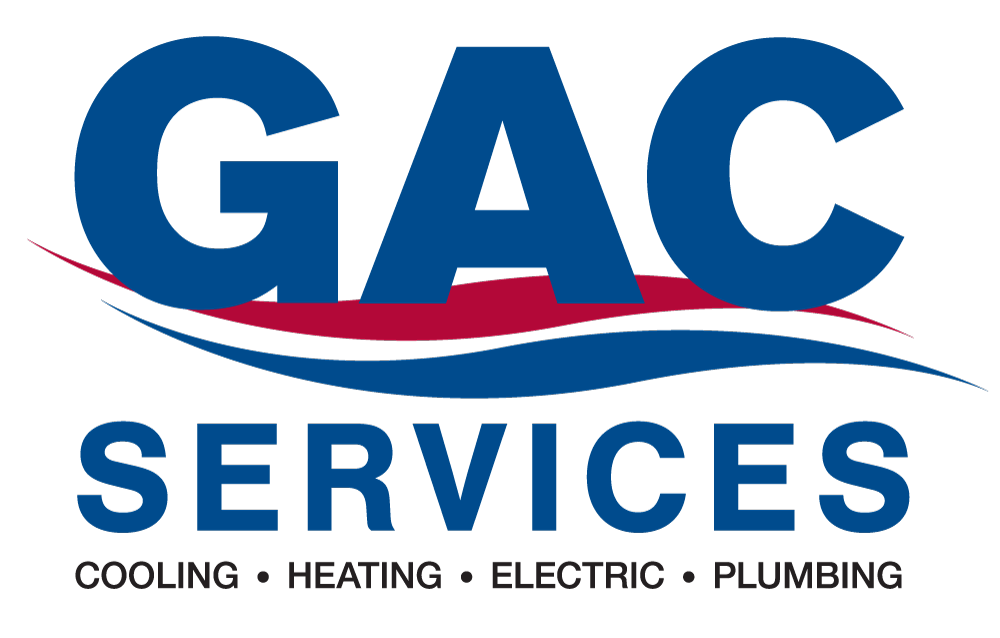As a homeowner, it’s important to know and understand the various parts of your home’s air conditioner unit. Even a basic understanding of these components can help you better maintain your system and more effectively communicate with your AC technician when calling for repairs.
Learn about some of the most important components of your AC unit, how they work, and how they affect the temperature in your home.
1. The Thermostat

A thermostat is the recognized “brains” of AC operation, as it controls the entire system. This component should always be prioritized when an AC unit is inspected. Not only should it be checked for an accurate temperature reading, but it should also be inspected to ensure that it operates the unit efficiently.
It’s important for the thermostat to be as accurate as possible, as this is key for staying cool at home. If the thermostat is not working properly, your home can be warmer than intended. This can eventually lead to the AC overheating, which is a bigger, more expensive problem.
The thermostat is also a key aspect of managing your monthly energy bills from getting too high. When used properly, it can help keep your energy costs low without compromising your family’s comfort.
2. The Compressor

The AC compressor is a key component of an air conditioning system. It is a large electric pump that pressurizes refrigerant gas, turning it back into a liquid. The compressor, usually located outside the building, generates a lot of heat and needs a bigger fan to cool it down. This cooling fan prevents overheating, ensuring optimal performance and efficiency.
The compressor maintains a comfortable indoor environment by effectively circulating and pressurizing the refrigerant, regulating temperature and humidity. Its reliable operation is essential for the efficiency and longevity of the entire HVAC system.
3. The Condenser
The condenser is an air conditioner part that expels the latent heat absorbed by the refrigerant indoors, allowing the refrigerant to cool and return to a liquid state. It uses coils and fins to increase the surface area for heat exchange, and a fan helps blow the heat away.
Modern AC condensers are highly efficient due to better design methods and higher quality materials. Without the condenser, the system would overheat, forcing the compressor to work harder and reducing the system’s overall efficiency and lifespan.
4. The Expansion Valve
The expansion valve is a little known but important part of an air conditioner. It regulates the amount of compressed liquid refrigerant moving into the evaporator. In many ways, it is the most complicated element in an AC system.
A temperature-sensing bulb filled with a gas, similar to that in the main system, controls the refrigerant flow. As the temperature increases, this bulb causes a spring pressure gauge to open a valve. As the temperature in the suction line decreases, so does the pressure in the bulb, and, therefore, the pressure on the spring decreases, thus causing the valve to close.
5. The Evaporator

The AC evaporator is a critical part of your house’s AC unit. It is built up of coils where the cool air is blown over. This air is then sent to the living space through the ductwork. This cooled air circulates through the ducts, lowering the indoor temperature.
You should invest in regular maintenance for your AC so the evaporator runs more efficiently, leading to a longer lifespan for your air conditioner.
6. The Blower
An AC blower is a fan that moves air across the evaporator coil in an AC system. It is a vital part of your air conditioner as it’s responsible for pulling warm air in and pushing cool, conditioned air out. The blower also helps draw fresh air into the building, improving indoor air quality.
The hum you hear when the AC is running is the motor and the fan blades working together to move air through the ductwork. Regular maintenance of the blower, such as cleaning or replacing parts, keeps it running efficiently and quietly, ensuring a comfortable and healthy indoor environment.
7. The Ductwork
Although not technically part of your AC system’s mechanical system, ductwork is quite important, especially if you have a zoned system. Like the mechanical parts, ductwork should be checked on a regular basis, as any damage to the ducts can significantly affect the efficiency of the air conditioning system.
Damaged air ducts can cause your home to be less cool than intended, which can then cause the AC unit to overwork, leading to higher energy bills.
GAC Services provides air conditioner services in Gaithersburg, Frederick County, Montgomery County, Carroll County, and Howard County. Our experts can help you with various services, including:
Contact us today to schedule an appointment for the service you need.


